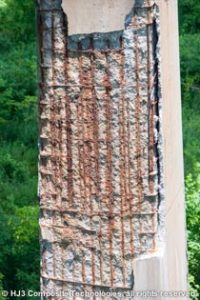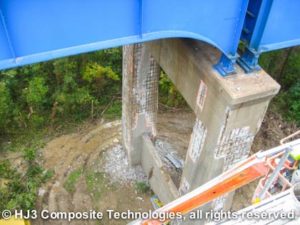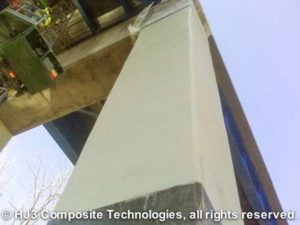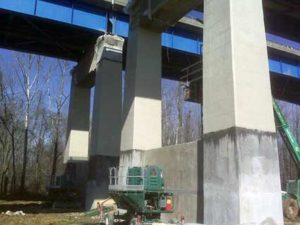Reviving America's Bridges: Carbon Fiber Solutions for Corroded Columns
According to the American Society of Civil Engineers (ASCE) 2013 Report Card for America's Infrastructure, over 66,000 bridges in the U.S. are currently considered structurally deficient. To bring these bridges up to a safe condition by 2028, an estimated $76 billion is needed. However, with limited funding available for full replacements, local and federal agencies are turning to innovative repair solutions. One such example is a heavily used bridge managed by the Kentucky Department of Transportation (DOT), which had more than 60 corroded columns. Instead of replacing the entire structure, the DOT chose HJ3’s advanced carbon fiber technology, saving nearly 50% in costs while ensuring long-term durability.
The Stress on Bridges and Overpasses
Bridges and overpasses face constant stress from vehicle vibrations, leading to micro-cracks in reinforced concrete. These cracks can grow over time, allowing moisture and oxygen to enter and cause corrosion of the steel rebars inside. As the rebar rusts and expands during freeze-thaw cycles, it exerts pressure that exceeds the strength of the surrounding concrete. In the case of the Kentucky bridge, this led to spalling and crumbling of the concrete, threatening the structure’s stability. With no budget for replacement, the DOT turned to HJ3’s carbon fiber system as a reliable and cost-effective alternative.
How HJ3’s Carbon Fiber System Works
The repair process began with removing the damaged outer layer using chipping hammers. The exposed rebar was carefully cleaned and protected, and wooden forms were built around each column to hold high-strength grout in place. Once the columns were restored, they were prepared for carbon fiber application. HJ3’s CivilTM system was then used to wrap the columns, providing enhanced shear and tensile strength. A protective topcoat was applied to ensure long-term performance. This method not only repaired the damage but also extended the life of the bridge significantly.
Reducing Disruption and Saving Money
Traditional bridge repairs often lead to traffic congestion, delays, and safety concerns for workers. However, by choosing HJ3’s carbon fiber solution instead of full replacement, the DOT minimized road closures and disruption. The project was completed quickly and efficiently, saving both time and money. Additionally, the corrosion-resistant nature of carbon fiber eliminates the need for frequent maintenance, making it a smart long-term investment. The result? A 50% reduction in costs compared to traditional replacement methods.
Why Choose Carbon Fiber for Bridge Repairs?
Maintaining our infrastructure is essential for public safety and economic growth. If your bridge is showing signs of wear or needs restoration, HJ3’s carbon fiber systems offer a durable, efficient, and sustainable solution. Contact our team today to learn more about how we can help preserve your infrastructure and extend its lifespan without the high cost of replacement.
â€




â€
Wenzhou Huaze Machinery Co.,Ltd , https://www.multihz.com